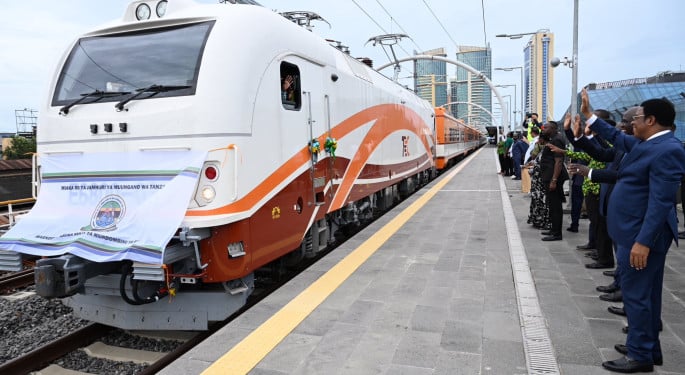The videos have been making the rounds on social networks in recent weeks. The new train linking the Tanzanian capital Dodoma to the city of Dar es Salaam has made its first test runs. Among the passengers on board was Prime Minister Kassim Majaliwa, accompanied by members of the Tanzanian government and several representatives of civil society.
Technically, this electrically-powered train operates with a catenary (specifications: 25 kV 50 Hz AC), i.e. a set of supporting cables and conducting wires that allow electricity to be collected above the tracks. This locomotive has nothing to envy of the rail infrastructures of developed countries, since it is connected to Wi-Fi and can reach speeds of up to 160 km/h. In any case, this is much faster than the 63 km/h on the Brussels-Charleroi line in Belgium, apart from the high-speed trains (TGV).
A sub-regional locomotive
The train is due to enter commercial service by July 2024 on the Tanzanian Railways (TRC). But the Dar es Salaam-Dodoma section, which cost 23 billion Tanzanian shillings ($9 billion), is only a small part of the Standard Gauge Railway (SGR), financed to the tune of $696 million by the African Development Bank (AfDB).
Read also-
This is a vast programme to modernise 650 km of railway line in East Africa. In addition to human travel, the new infrastructure should facilitate the transfer of goods between the port of Dar es Salaam and the neighbouring cities of Kigali in Rwanda and Bujumbura in Burundi, and later to Goma in the Democratic Republic of Congo (DRC).
Benoit-Ivan Wansi
